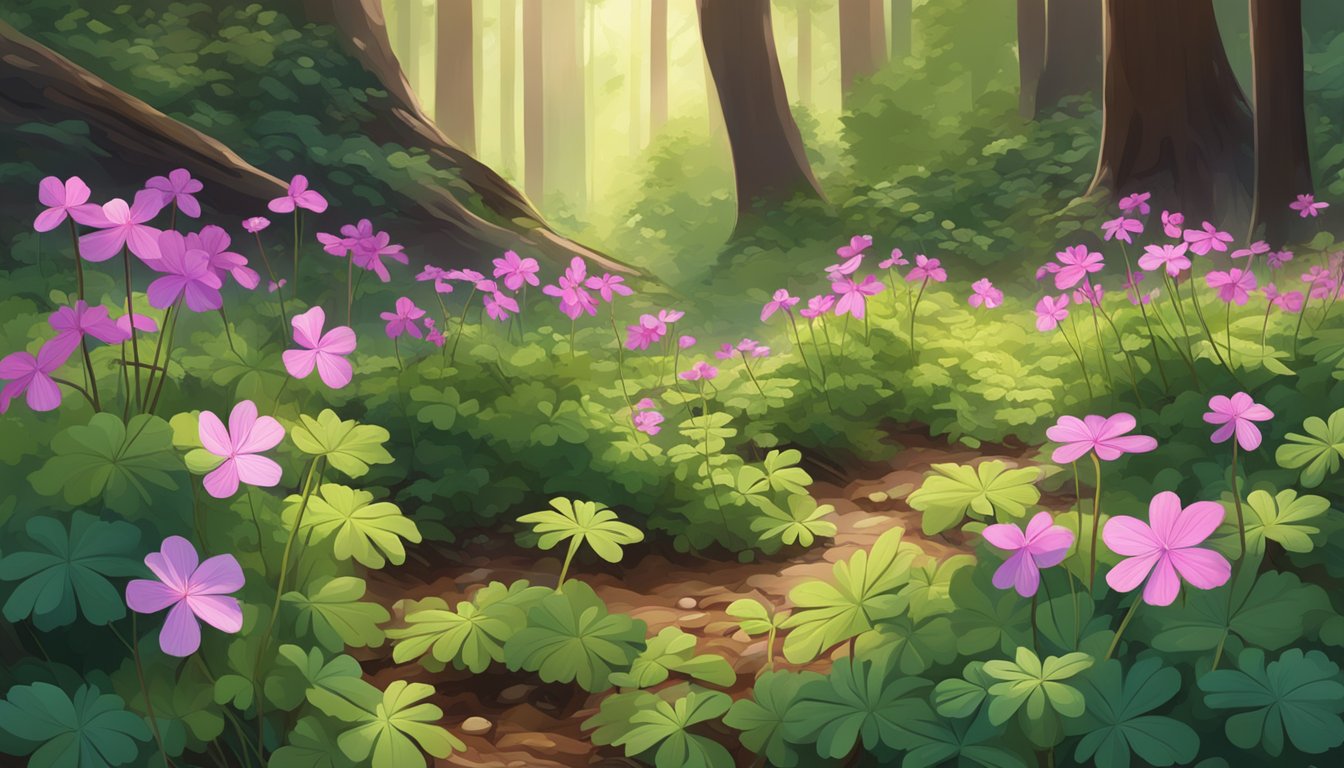TheHerbProf.com is a treasure trove of knowledge for those interested in natural healing and herbal remedies. The website is run by Paul Johnston MD. A naturopathic who has not only received extensive education in the field but also has personal experience in self-healing.
Herb Robert, also recognized as Geranium robertianum, is a prevalent variety of cranesbill native to regions of Europe, Asia, North Africa, and parts of North America. This plant boasts a lengthy history of utilization as a food source, an antiseptic, and a talisman for good luck. It has been employed internally to address a range of health issues, and externally to treat wounds, herpes, and skin outbreaks.
This plant is a low-growing biennial with reddish stems and bright pink flowers. It grows in woodland, grassland, heathland, and moorland. People have used Herb Robert for diarrhea, to give the liver and gallbladder a boost, to reduce swelling in the kidney, bladder, and gallbladder, and to keep stones from forming in these organs. People use it to tackle respiratory infections, soothe skin conditions, and give the immune system a good old boost!
Despite its many uses, Herb Robert doesn’t always play nice. It’s a Class B noxious weed that loves to spread and quickly take over native habitats. It has the ability to travel up to 20 feet away from the plant and produce crane-shaped seeds with sticky hairs. Therefore, it is important to control and prevent the spread of this invasive plant from Washington, Oregon, and British Columbia.
What is Herb Robert?
As a gardener and herbalist, I often come across Herb Robert (Geranium Robertianum), a common species of cranesbill native to Europe and parts of Asia, North Africa, and parts of North America. In North America, folks often call this herb Stinky Bob or Robert’s Geranium.
Scientific Name: Geranium Robertianum
Herb Robert belongs to the family Geraniaceae and is a member of the genus Geranium. It is an annual or biennial plant that grows up to 60 centimeters tall. The leaves show off their deep divisions, while the small, pink flowers flaunt their five petals.
Family: Geraniaceae
The Geraniaceae family includes around 800 species of flowering plants, most of which are native to the temperate regions of the world. People often use the family’s attractive and fragrant flowers to add a splash of beauty to their ornamental gardens.
For centuries, people have turned to the versatile Herb Robert for its medicinal properties. People say it works wonders for a variety of ailments, including diarrhea, liver and gallbladder issues, and inflammation of the kidney, bladder, and gallbladder. People say this herb works like a charm in preventing kidney stones.
In addition to its medicinal properties, this herb is also edible. You can munch on the leaves and stems of this herb raw or cooked, but brace yourself for a slightly bitter taste. They can be used in salads, soups, and stews, and are a good source of vitamin C.
Overall, Herb Robert is a versatile and useful plant that has been used for centuries for its medicinal and culinary properties. As a gardener and herbalist, I highly recommend this plant for anyone looking for a natural and effective remedy for a wide range of ailments.
Identification and Habitat
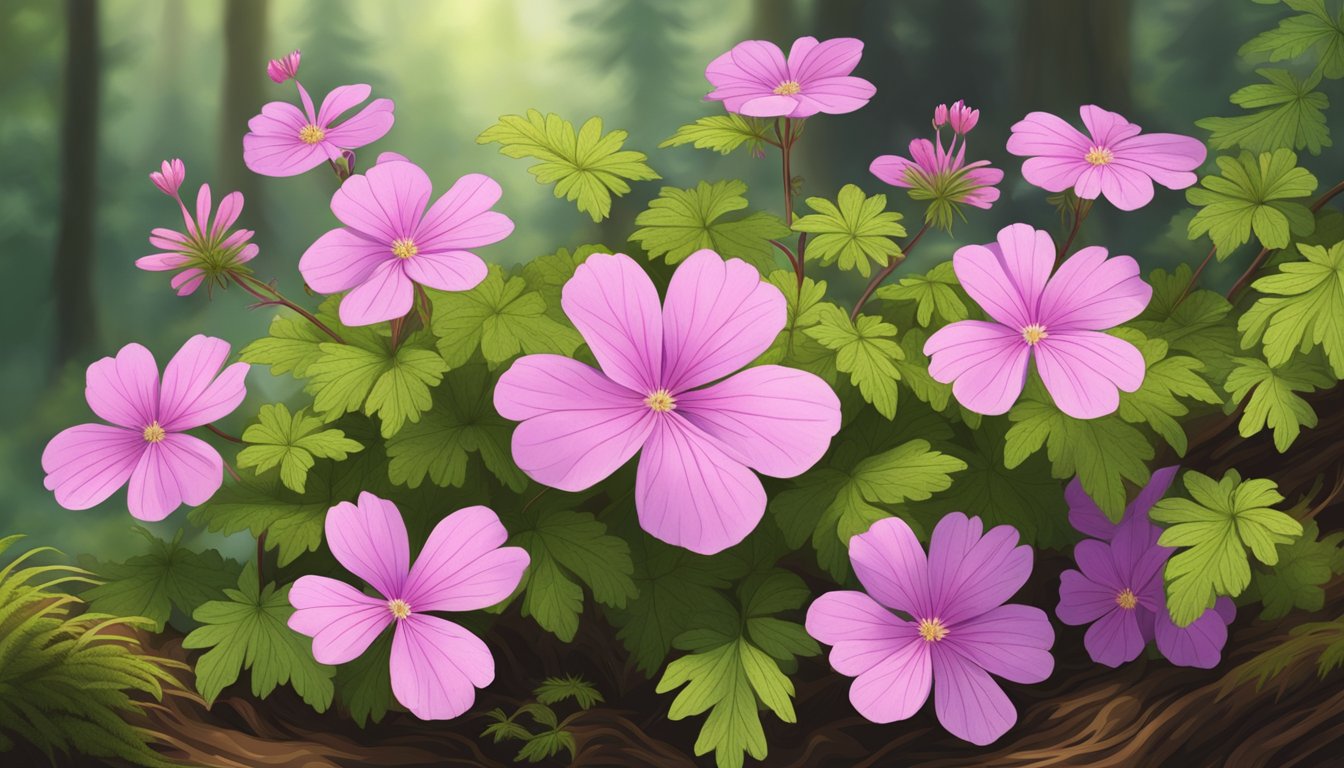
Description
I am a small, low-growing biennial plant with reddish stems and dark green, palmately divided leaves. My leaves are about 6cm long and have deeply defined lobes. My flowers are bright pink with five star-shaped petals and measure 1.5 to 2 cm across. Sometimes my flowers can be pale pink. I have five sepals with broadly membranous margins, is glossy, long-haired, and erect. My flower becomes a beak-like pod filled with many tiny black seeds.
Distribution and Habitat
Native to Europe, parts of Asia, and Africa. I am commonly found in hedgerows and on woodland edges, on wasteland, and in the margins of crop fields. I am also very good at colonizing the stony verges and central reservations of motorways. In forests, I form dense mats of interlocking leaves and rosette plants. I prefer rocky or gravelly soil and can tolerate shade and scree.
Impact and Control
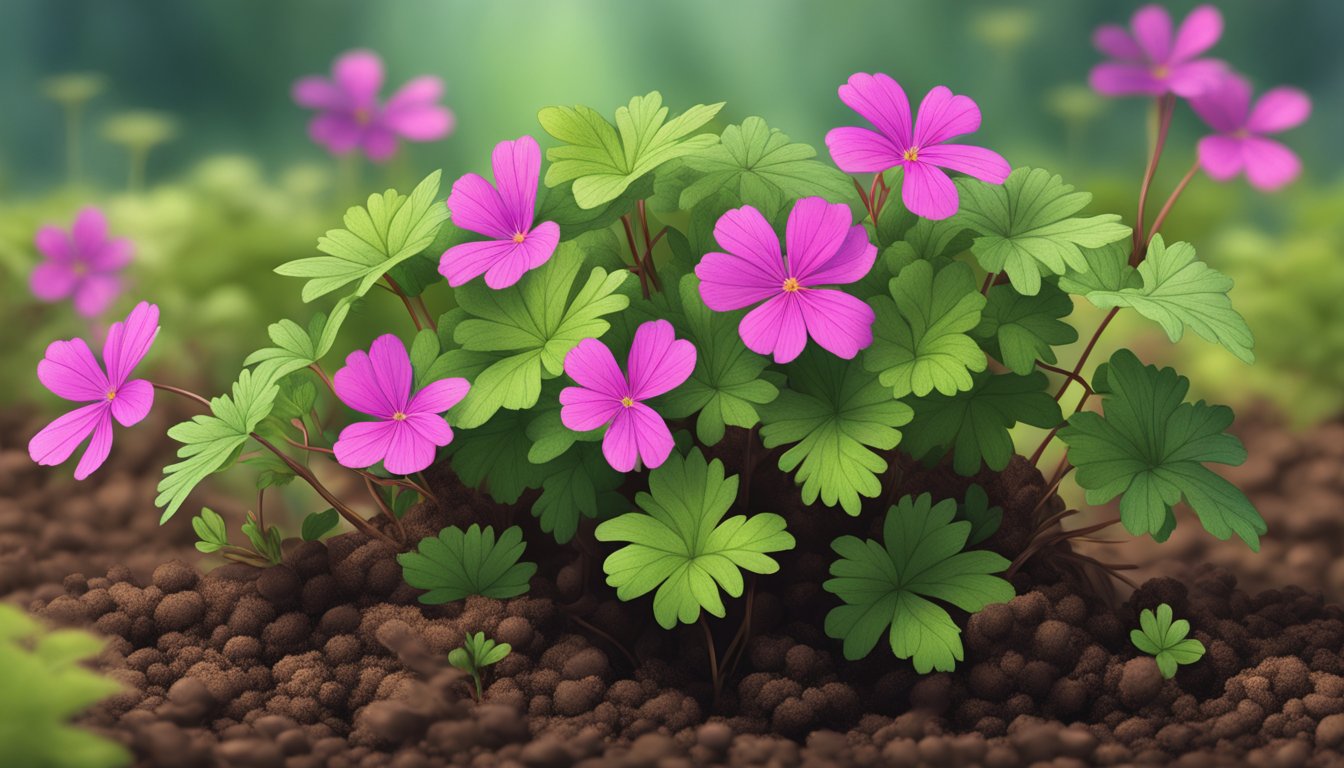
Invasive Species and Garden Pest
As an invasive species, Herb Robert can quickly spread and displace native herbaceous species. It forms dense monocultures and can invade forests even in pristine conditions, establishing vigorous populations. This herb is a garden pest that can be a nuisance to gardeners due to its ability to spread rapidly and take over garden beds.
Methods of Control
There are several methods of controlling Herb Robert. Hand pulling is an effective method of control as the plant has a shallow, weak root system. It is recommended to pull the plants before they go to seed as the seeds can survive in the soil for several years. It is important to frequently monitor sites and control them as needed.
Another method of control is through the use of mulch. Mulching can help to suppress the growth of Herb Robert and prevent it from taking over garden beds. It is recommended to use a thick layer of mulch to ensure that the plant does not grow through it.
Mowing or cutting back Herb Robert with a string trimmer or weed whacker early in the season before they flower is also an effective method of control. This will prevent the plant from going to seed and spreading further.
It is important to note that Herb Robert is a weed that can be difficult to get rid of completely. It is recommended to use a combination of methods to ensure effective control.
Interesting Facts and Additional Information
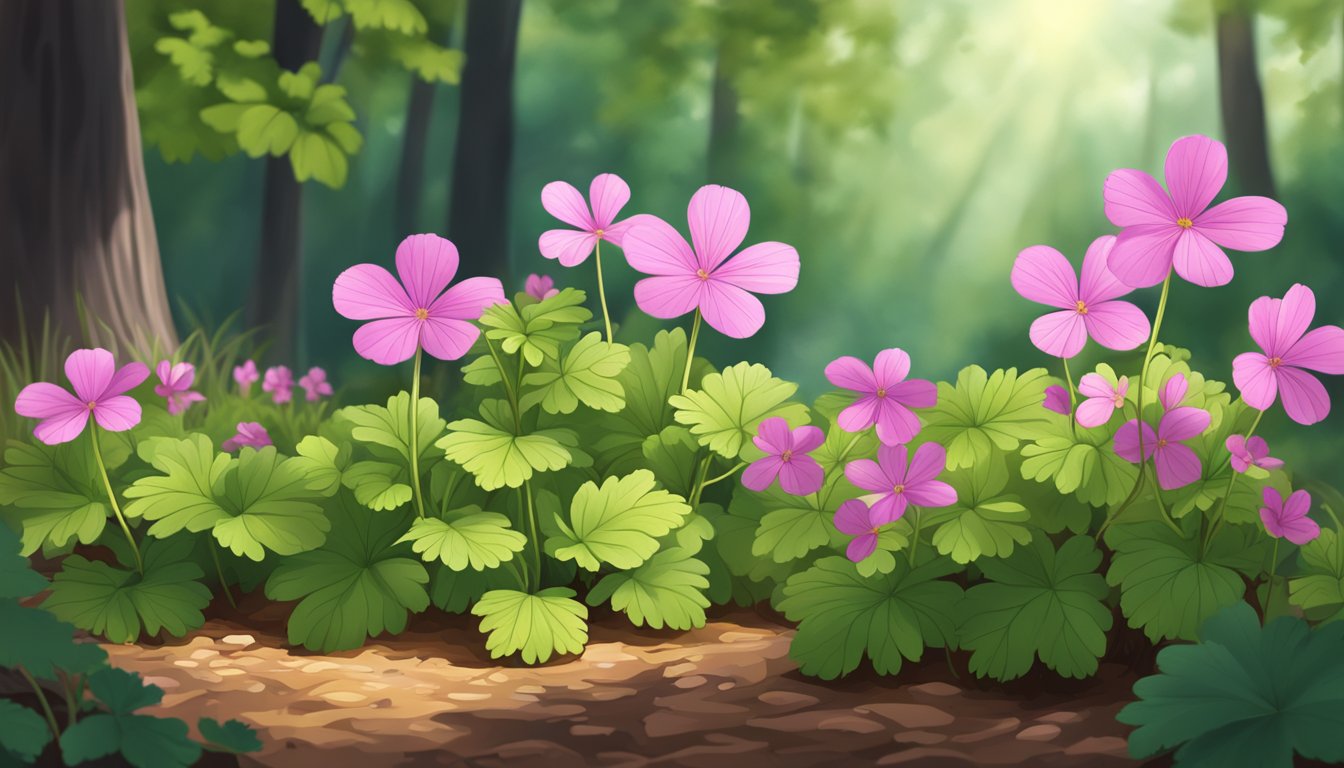
Symbolism and Mythology
As far as I know, Herb Robert does not have any significant symbolism or mythology associated with it.
Conservation Efforts
Herb Robert is a common plant and is not considered threatened or endangered. However, it is still important to protect and conserve its habitat to ensure that it continues to thrive.
Related Agencies and Professionals for Help
If you have any questions or concerns about this Herb or other wildlife, you can contact your local wildlife agency or conservation organization for assistance. The Wildlife Trusts and Woodland Trust are two organizations that provide information and resources on wildlife conservation.
Common Misconceptions and Comments
One common misconception about this herb is that it is a type of geranium. While it is in the same family as geraniums, it is a separate species. Another misconception is that it is harmful to bees and other invertebrates. However, it actually provides an important source of nectar and pollen for these insects.
Related Species and Helpful Links
There are several related species of Herb, including Geranium maculatum and Geranium sanguineum. If you are interested in learning more about Herb Robert or other related species, you can check out the following links:
Overall, Herb Robert is an interesting and important plant that provides a valuable source of food and habitat for wildlife.
Before You Go – Herb Robert
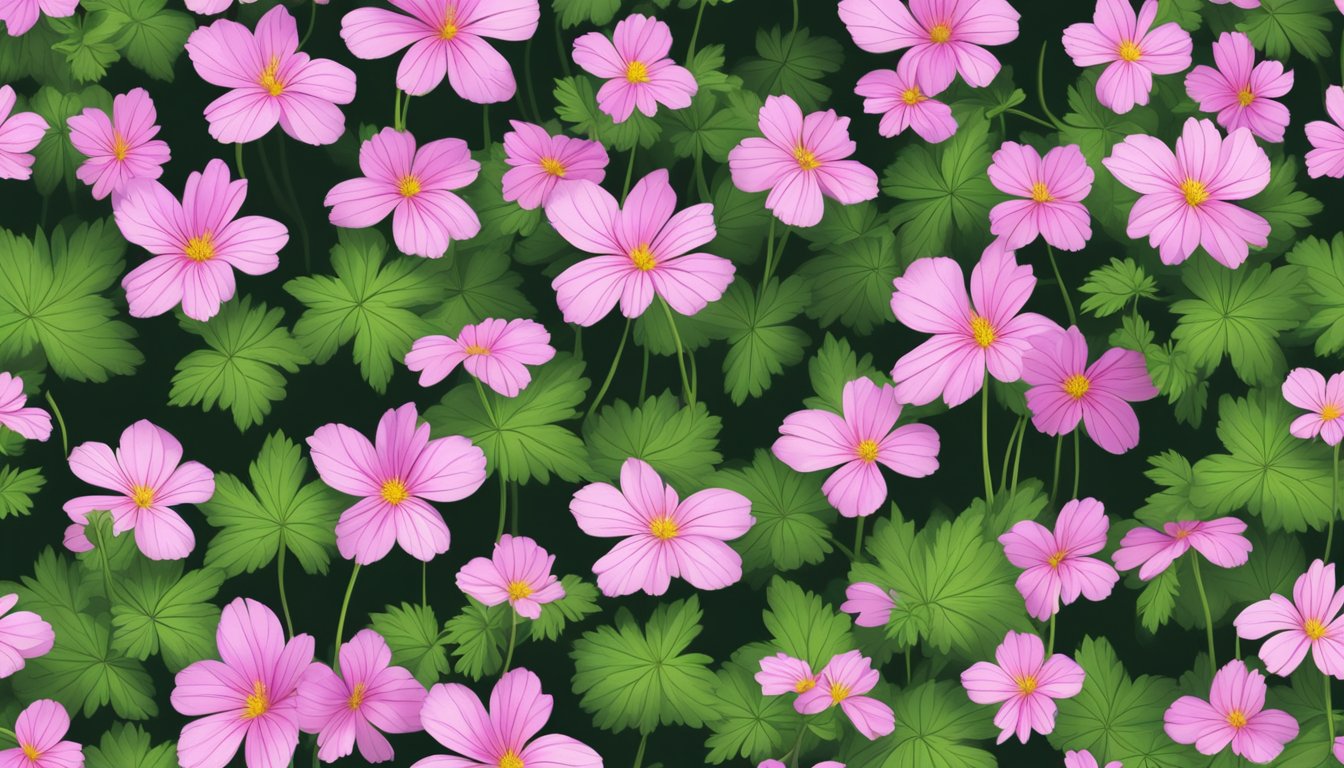
This Herb is a fascinating plant with a rich history of medicinal and culinary uses. Its pink flowers and reddish stems make it a beautiful addition to any garden, and its low-growing habit makes it an ideal ground cover in woodland or rocky areas.
As a member of the geranium family, Geranium robertianum, or Herb Robert, is native to Europe and North America and can be found growing wild in hedgerows and along roadsides. It is an annual or biennial plant that blooms from May to September and has bright pink, star-shaped flowers with five petals.
Herb Robert has traditionally been used to treat a variety of ailments, including diarrhea, liver and gallbladder problems, toothache, and nosebleeds. It is also known for its antiseptic properties and has been used to heal wounds.
While most folks find Herb Robert safe, keep an eye out for potential party crashers like headaches and skin irritation. You can control its spread in gardens most effectively by hand pulling, and it doubles up as a mosquito-repelling mulch!
Overall, Herb Robert is a valuable plant that deserves a place in any garden or wildflower meadow. Its palmately divided leaves and delicate pink flowers make it a beautiful addition to salads, and its many medicinal properties make it a useful herb for treating a variety of ailments.
Herb Robert and The Herb Prof: A Dynamic Duo
Herb Robert and The Herb Prof are like two peas in a pod! They’re both all about the magic of herbs. Understanding the wonders of Herb Robert is the first step in your herbal journey, and The Herb Prof is your trusty guide, leading you deeper into this green wonderland.
Herb Robert gives you the basics. It’s like a dictionary for all things herbal. You’ll learn about the diversity of herbs, their uses, and their unique properties. It’s your launchpad into the world of herbs.
On the other hand, The Herb Prof takes you further. It’s like your personal herbal encyclopedia, but way more fun! You’ll find detailed articles, how-to guides, and even some herbal lore. It’s the place to be if you’re serious about herbs.
So, you see, Herb Robert and The Herb Prof are shaking up the herbal world together! They complement each other perfectly, providing a comprehensive and enjoyable herbal learning experience. So, buckle up, herbal enthusiasts! Your journey into the world of herbs is about to get a whole lot more exciting!
References – Herb Robert
Little Herb Encyclopedia, by Jack Ritchason; N.D., Woodland Publishing Incorporated, 1995
The Ultimate Healing System, Course Manual, Copyright 1985, Don Lepore
Planetary Herbology, Michael Tierra, C.A., N.D., Lotus Press, 1988
Handbook of Medicinal Herbs, by James A. Duke, Pub. CRP Second Edition 2007
The Complete Medicinal Herbal, by Penelope Ody, Published by Dorling Kindersley
Check the Following Articles!
Herb and Garlic Seasoning: Perfect Addition to Your Kitchen
Understanding the Basics of Herbalism: Herb Definition
Herb Roasted Chicken: A Delicious Recipe for Any Occasion
Frequently Asked Questions – Herb Robert
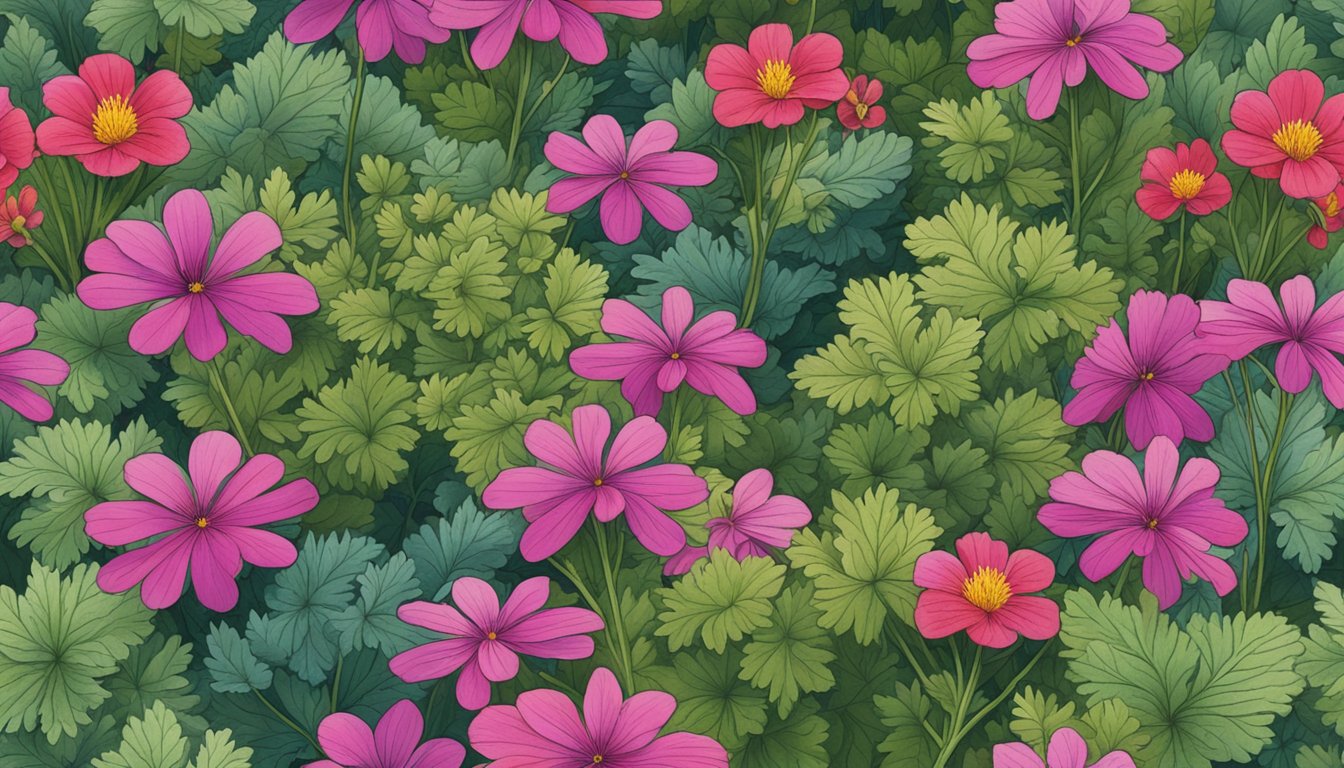
What are the medicinal properties of Herb Robert?
Herb Robert has been used for centuries as a medicinal herb due to its various health benefits. It contains high levels of antioxidants, which help to protect the body against free radicals and reduce the risk of chronic diseases. Additionally, it has anti-inflammatory and antibacterial properties, making it useful for treating infections and reducing inflammation.
How can Herb Robert be used in recipes?
Herb Robert has a strong, pungent flavor that is similar to that of mint. It can be used in a variety of recipes, including salads, soups, and stews. The leaves can also be used to make tea, which has a refreshing taste and offers numerous health benefits.
Is Herb Robert an invasive species in certain areas?
Yes, Herb Robert can be invasive in certain areas. It readily self-seeds and can quickly take over an area if left unchecked. However, it is not considered a major threat to native plant species and is generally easy to control.
What are the benefits of using Herb Robert as an insect repellent?
Herb Robert has a strong scent that is known to repel insects, making it an effective natural insect repellent. It can be used to keep mosquitoes, flies, and other insects at bay.
What are some plants that look similar to Herb Robert?
Herb Robert is often confused with other plants, such as cranesbills and wild geraniums. These plants have similar leaves and flowers, but can be distinguished by their growth habits and the shape of their leaves.
Is Herb Robert a perennial or annual plant?
Herb Robert is a perennial plant, meaning that it lives for more than two years. It can grow up to 50 cm tall and produces small, pink flowers from May to October.
